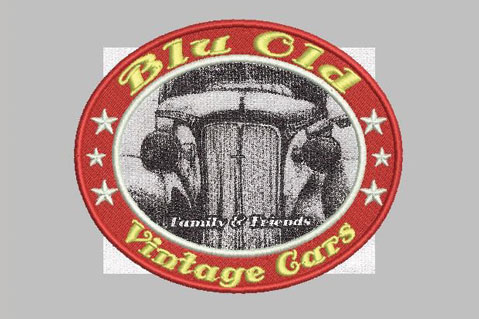Strategy June 30, 2016
How to Appeal to Gearheads with Screen Printing
The unique attributes of embroidery and screen print combine to reflect a car lover’s passion.

Luiz Vitor Mendes Neto, owner of Vitor Digitizing, uses multimedia to take advantage of the strengths of each decoration discipline to produce spot-on realistic designs for car lovers.
What decorating techniques were used in this project?
Luiz Vitor Mendes Neto: We used screen printing and embroidery.
How did you combine the techniques?
LN: The client had screen printed a lot of round patches to show the car’s details. Embroidery couldn’t portray the fine details in the way the client desired, so we selected screen printing to do that part of the patch. Once the car details were printed on the patch, we added embroidery for dimension. The result is a type of appliqué patch, which allows details to come through while still showcasing the color and dimension that embroidery can bring.
Why do these techniques work well together?
LN: Embroidery adds height and dimension to the design, while also bringing in additional color. Screen printing allows for the fine details to be represented. The combination is popular with car enthusiasts because it allows the cars to be portrayed accurately and adds the charm of an embroidered design as well. The end result looks like an embroidered patch or appliqué, but is more detailed than embroidery alone could be.
What equipment and materials did you use?
LN: The patches were screen printed on 100% cotton material. The digitizing for the embroidery was done using Wilcom software. The embroidered portion of the design was sewn on a Tajima six-head machine. The embroidery thread was polyester. Keep in mind that a minimum distance of 2mm is necessary between the screen-printed design and where the embroidery starts.
What would be the target market for this kind of design?
LN: Car clubs would be a great target market for this type of decoration. Any club or organization that’s passionate about getting the details of what’s being pictured correct would be a good customer for a combination of embroidery and screen print. The screen-printed part would allow cars or motorcycles or any sort of vehicle to be depicted accurately, while the embroidery echoes the types of patches that these sorts of clubs often wear. It’s the best of both worlds.
How could a decorator sell this type of design?
LN: Approach organizations that are concerned about getting the details correct – car clubs, motorcycle clubs, bicyclists or any organization that wants realistic depictions of their particular vehicular interest. Explain how the screen printing allows for fine details to be reproduced while the embroidery echoes the look of patches, which will already be familiar to many of these clubs.
Hot Tip: Treat this type of design like an appliqué. Make sure the screen print is done on fabric that won’t fray easily, or apply a no-fray spray to stop edges from fraying. If the fabric is one that might shrink, it may be advisable to wash it before it is screen printed or embroidered. Mark the start point of the embroidery carefully, remembering to keep the necessary distance so the embroidery and screen print are both showcased appropriately.
Read This!
Print and Use Placement Templates
Adding embroidery to an already created design requires accuracy. If embroidery is done in the wrong place, the entire design could be ruined and have to be redone. Urban Threads offers a tutorial that teaches how to create a placement template to make sure the embroidery is placed exactly where it needs to be. To learn all the steps in creating a placement template, visit Urban Threads’ blog and read the tutorial here.
